Collecting Bouguereau Paintings > Though he was never robustly championed by the critics, this French academician successfully applied his formidable skill to satisfy a hungry American market.
The exhibition “Bouguereau & America” (2019-2020 at the Milwaukee Art Museum; the Memphis Brooks Museum of Art; and the San Diego Museum of Art) gathered more than 40 canvases painted by William-Adolphe Bouguereau (1825–1905).
Bouguereau and His American Collectors
BY THOMAS CONNORS
“Asset class” may be a relatively new descriptor for art, but amassing works of aesthetic distinction to signify one’s own status actually dates back to antiquity. In the United States, this strategy manifested in earnest for the first time with the great industrialists and bankers of the Gilded Age, but Henry Clay Frick and J.P. Morgan were not the only captains of industry adding skylit “picture galleries” to their grand homes.
People of lesser fortune and fame swiftly followed suit. Although their collections were generally not of the same caliber and did not play as significant a role in shaping our country’s greatest museums, these people and their acquisitions nonetheless influenced American cultural history and also the formation of many artists’ reputations.
Though he was never robustly championed by the critics, this French academician successfully applied his formidable skill to satisfy the hungry American market.
ACCOMMODATING HIS CLIENTELE
Born in the seaport of La Rochelle, Bouguereau arrived in Paris at age 20 to study with the neoclassicist painter François-Édouard Picot. After two years at the École des Beaux-Arts and two failed attempts, he won the Prix de Rome in 1850, which offered him the opportunity to experience masterworks of the Italian Renaissance and classical antiquity firsthand. Having demonstrated a high level of technical mastery and a thorough respect for pictorial conventions, Bouguereau was soon launched on a respectable career.
In 1856 he received a portrait commission from Emperor Napoleon III, and 20 years later was elected to the academy. Between these milestones, and until his death in 1905, Bouguereau remained true to the training of his youth, deftly handling his brush to produce client-pleasing images: mythical scenes, allegorical nudes, and charming waifs.
The writer Émile Zola — best remembered as the champion of Édouard Manet and the Impressionists — dismissed Bouguereau’s efforts as pretty pictures for the nouveaux riches, populated with “peasants who are clean and rosy… young girls chaste and modest… goddesses delicately suggestive.” However, as the scholar Abigail Solomon-Godeau suggests in the exhibition catalogue, although Bouguereau’s style and subject matter were retrograde when contrasted with those of the avant-garde, his work was, in fact, a business-like response to changing times.
No longer able to depend on the state and church as patrons, academic artists learned to behave like capitalists. In 1863, when Manet’s “Le déjeuner sur l’herbe (The Luncheon on the Grass)” sensationally pointed the way toward a new kind of art, Bouguereau’s far-from-progressive Faun and Bacchante was a reasonable accommodation of the conservatism that currently ruled the marketplace.
American collectors — not yet seduced by emergent French modernism — proved to be the artist’s most ardent supporters. “Bouguereau & America” explored the course of Gilded Age collecting and the ways in which Americans’ reverence for the French Academy shaped not only the personal taste of affluent individuals but also, in time, influenced our country’s institutional acquisitions.
Tanya Paul, the Isabel and Alfred Bader Curator of European Art at the Milwaukee Art Museum, co-organized the exhibition. She notes, “When you look through Edward Strahan’s well illustrated volume of 1880, The Art Treasures of America, most of the artists listed in it — such as the painters of the Düsseldorf school — have fallen off our art-historical map completely. Bouguereau is one of the few who has remained, who has stayed a central part of our consciousness in terms of that period.”
Aided by the acumen of the Parisian dealers Paul Durand-Ruel and Adolphe Goupil (and by what was originally Goupil’s satellite in New York, M. Knoedler & Co.), Bouguereau’s art found its way into the mansions of America’s growing elite. “Diamond Jim” Brady and William Randolph Hearst were just two of the marquee names to own his canvases. But one of the first to buy a Bouguereau was the New York City hardware store magnate John Wolfe, who purchased “Nymphs and Satyr” (1873) directly from the artist in 1882.
Later owned by the hotelier (and convicted murderer) Edward S. Stokes, who displayed it in the bar of New York’s Hoffman House, this painting was ultimately acquired in 1942 by the Singer sewing machine heir, Robert Sterling Clark, and has long adorned the museum he and his wife created in Williamstown, Massachusetts.
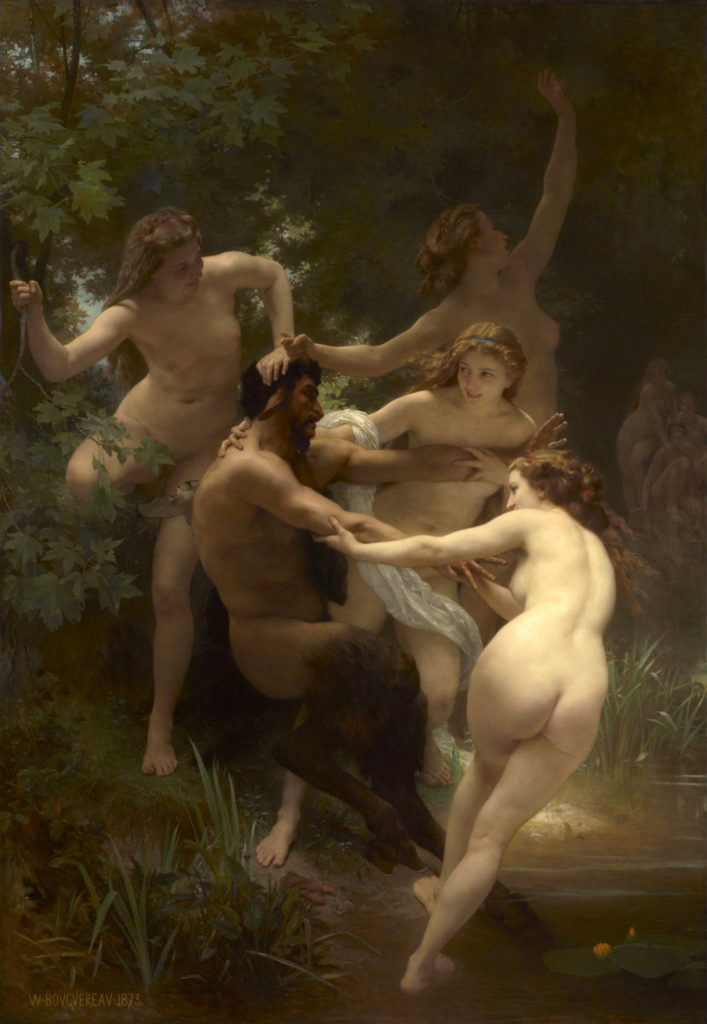
Although hewing close to academic ideals when it comes to subject matter, “Nymphs and Satyr” is certainly an easier picture to absorb (thanks in part to its lusciously rendered flesh) than a much earlier Bouguereau scene, “Battle of the Centaurs and the Lapithae” (1852), now at the Virginia Museum of Fine Arts. Perhaps it is no wonder that, when he began creating work for the American market, Bouguereau muted his classical allusions and narratives, instead making beguiling verisimilitude the primary attraction.
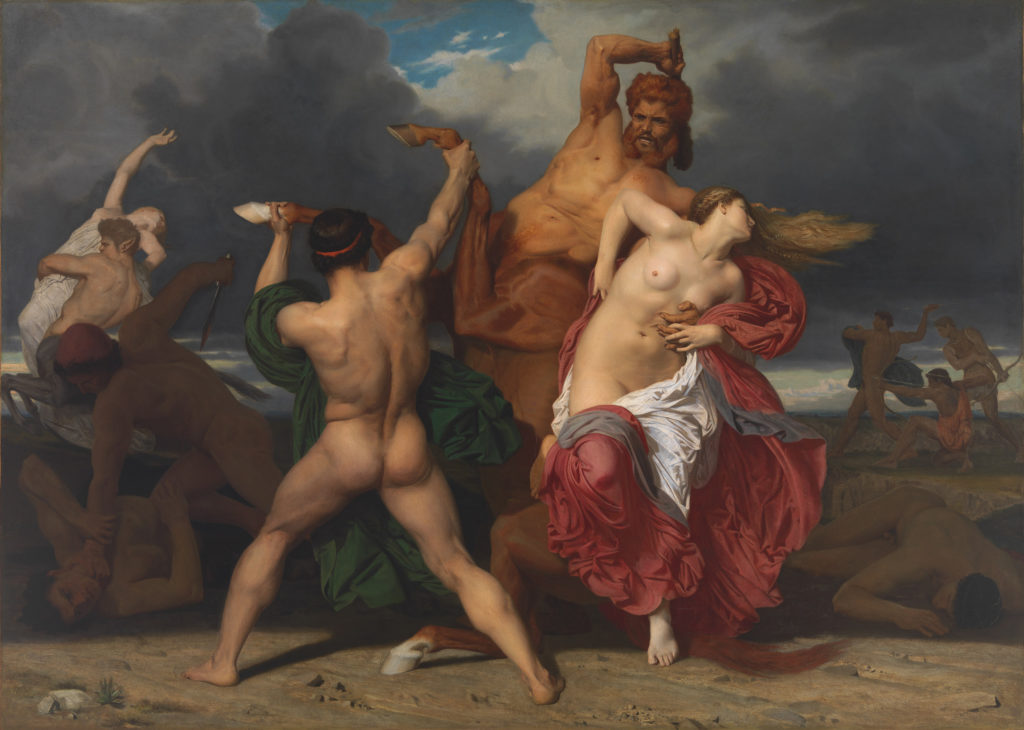
“When he met Durand-Ruel, he started to understand what he needed to do to sell,” Paul suggests. “He needed to take his skills as an academically trained artist and translate them into paintings that would be more accessible. This meant a reduction of complexity in terms of subject matter, but not in terms of composition.”
While Bouguereau eventually courted American collectors with images of mournful urchins with outstretched hands, loving mothers, and chaste nudes such as “Dawn” (1881), his more recognizably classical scenes did not go unappreciated here. “Homer and His Guide” (1874) was acquired soon after its completion by the New York department store entrepreneur Alexander Turney Stewart, whose collection included two other works by Bouguereau, as well as pieces by his compatriots Ernest Meissonier and Rosa Bonheur. Orestes Pursued by the Furies (1862) entered the collection of the Philadelphia inventor and philanthropist Joseph Harrison, Jr.

As he had in France, Bouguereau took his share of lambasting in the U.S. The artist Winslow Homer asserted he would not cross the street to see a Bouguereau, calling his works “waxy and artificial.” After disparaging the artist’s renditions of the “picturesque poor,” the author and critic Clarence Chatham opined, “In an orderly society regulated by wholesome rules dictated by conventional propriety, such a painter is sure of his reward.”
IN AND OUT OF FASHION
“Bouguereau & America” was co-organized by Stanton Thomas, formerly the curator of European and Decorative Arts at the Memphis Brooks, and now curator of collections and exhibitions at the Museum of Fine Arts in St. Petersburg, Florida. He notes, “It’s hard not to think of the French critic Théophile Gautier’s comment in 1868, ‘Nous ne voulons pas de la peinture léchée’ (We do not want painting licked).” But it was exactly the slickness of Bouguereau’s canvases that American collectors found so appealing.
“Their surface perfection connoted value and quality,” Thomas explains. “It seems pretty clear that the robber-barons and merchant princes were consciously buying works that were so perfect as to be uncontroversial. And it was not just his technique, but also the harmonious, Raphael-like sweetness that melted so nicely on American palates.”
A Bouguereau first entered an American museum collection in 1878, when the widow of Joseph Harrison, Jr., gifted Orestes Pursued by the Furies to the Pennsylvania Academy of the Fine Arts. Not long after, similar bequests were conveyed to the Cincinnati Art Museum and New York City’s Metropolitan Museum of Art.
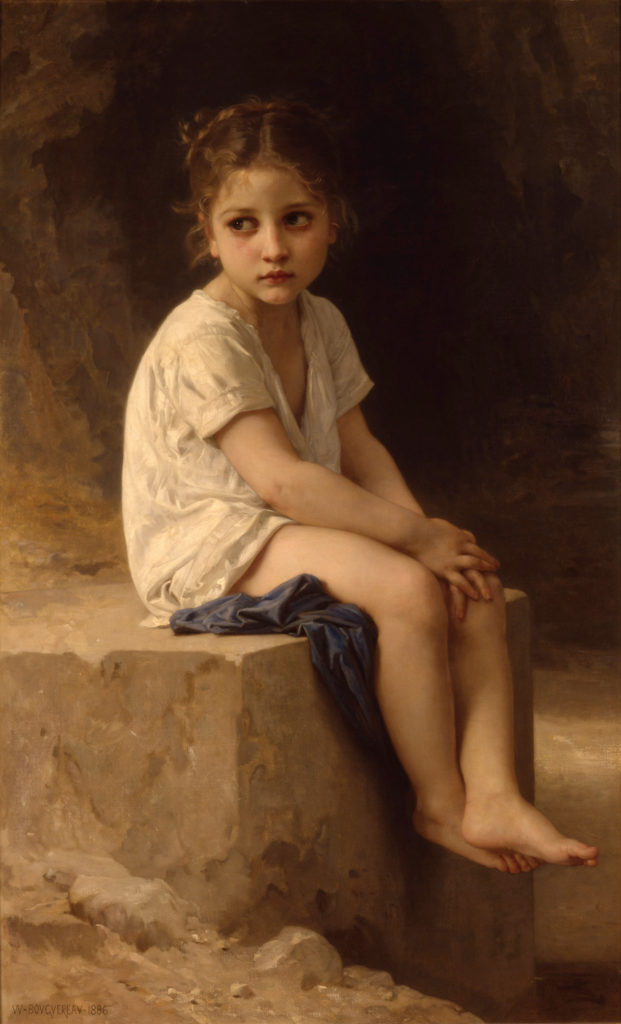
Over the years, Bouguereau paintings found their way into a number of smaller institutions, as well as the Art Institute of Chicago and later the J. Paul Getty Museum. While some of these were purchases, most were gifts or bequests, which makes us wonder if curators were biased against Bouguereau.
“Many of those works came into museum collections after the death of the artist and after his critical collapse, so yes, it is fair to say there was a lot of institutional indifference to his work,” says Thomas. “Perhaps even more telling is the way that Bouguereau paintings— almost inevitably seen as kitsch and saccharine — often languished in storage for decades before ever being shown in the museums’ galleries. I am always impressed by the vision of the very few collectors of the mid-20th century who astutely acquired this artist against prevailing market trends and art-historical bias, including Clark, Chrysler, and Getty.”
By the late 1880s, Bouguereau’s art began to lose its value, if not its appeal. As Tanya Paul notes in her catalogue essay, Return from the Harvest (1878) — originally valued at $45,000 — sold at auction for $8,000 in 1887 and fetched only $2,200 in 1929, when it was purchased by the vaudeville impresario Edward Franklin Albee. In the 1970s, a Bouguereau could be had for $10,000, but since the 1990s, his work has appreciated. In June 2010, “Pietà” (inspired by Michelangelo’s famous treatment) led the Old Masters & 19th-Century sale at Christie’s New York, selling for $2,770,500.
Of course, auction prices are only part of the story. Seeing his works, it is difficult not to be wowed by his vivacity, and by his profoundly skilled deployment of paint. In “Homer and His Guide,” one wonders how the light from above not only models the figures, but also makes their flesh glow. We apprehend the utterly recognizable parental expression in “Young Mother Gazing at Her Child,” and amid all the violence of “Battle of the Centaurs and the Lapithae,” we admire the delicately interlaced fingers of Eurytus and Hippodamia.
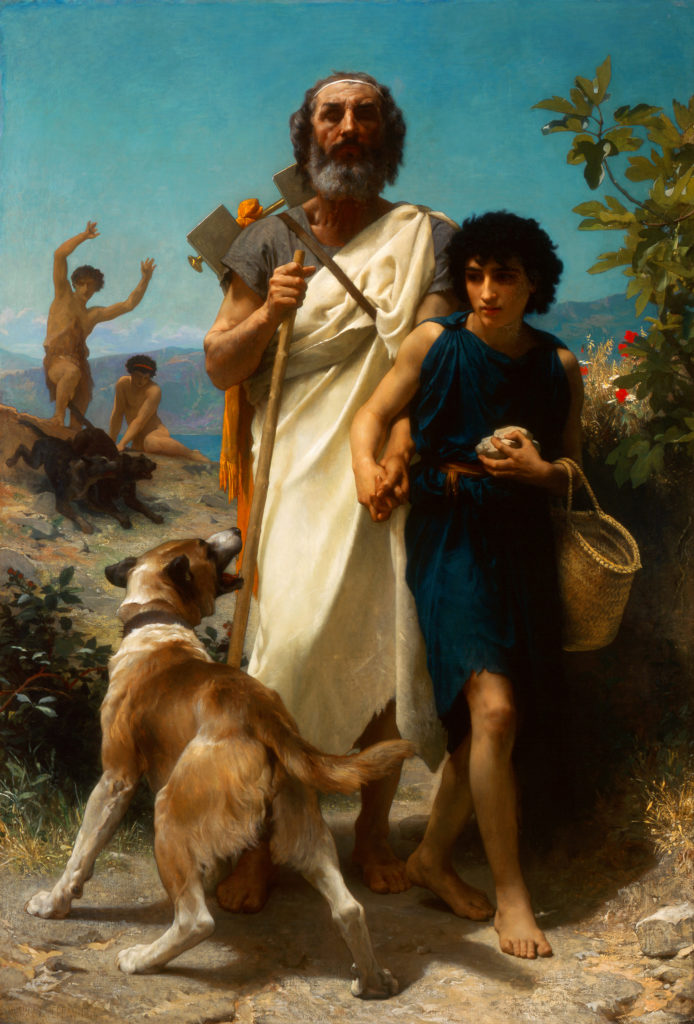
“I used to work at the Philbrook Museum of Art in Tulsa, where we had a Bouguereau picture depicting a shepherdess,” Paul recalls. “It was not the most amazing example of his art, but a strong one, and I could not take that painting off public view. In fact, I couldn’t even move it to a different wall because visitors were so in love with it.”
Having said that, Bouguereau remains a bit “rich” for some museum-goers — somewhat like having too much dessert. Or perhaps too “popular.” But this artist knew what he was doing and he made no apologies. “What can you do, one has to change with the taste of the public,” Bouguereau told a journalist in 1891. “I know that this style is the object of a lot of criticism… In painting I am an idealist, I only see beauty in art, and for me, art is beauty.”
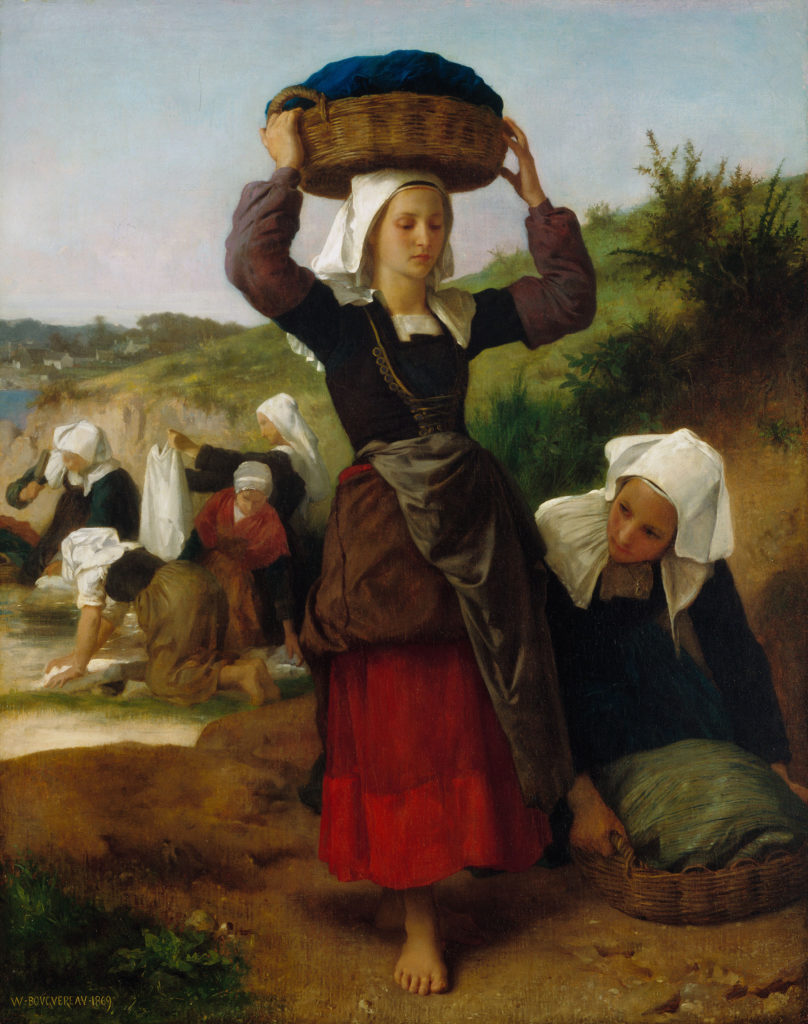
THOMAS CONNORS is a Chicago-based arts journalist. He wrote about the artist Ned Mueller in the August 2018 issue of Fine Art Connoisseur.
> Visit EricRhoads.com to learn about more opportunities for artists and art collectors, including retreats, international art trips, art conventions, and more.
> Sign up to receive Fine Art Today, our free weekly e-newsletter
> Subscribe to Fine Art Connoisseur magazine, so you never miss an issue

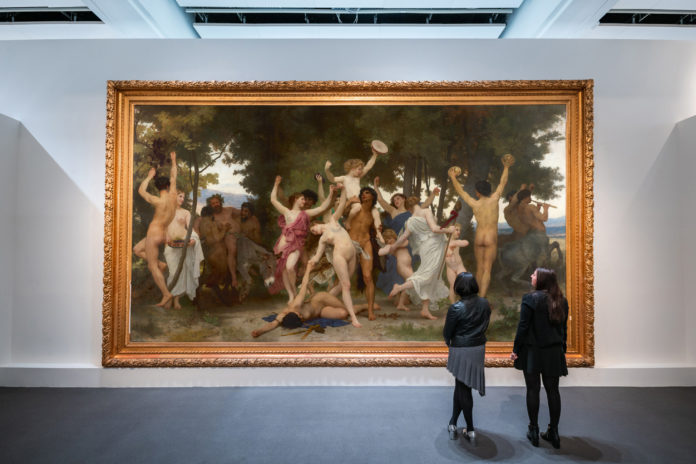
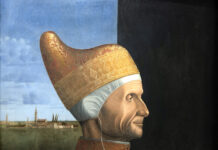






Excellent article. Interesting to see how the same piece can be valued so differently by museums and collectors…. dogma changes, but superb technical skill and emotional appeal inevitably survive.